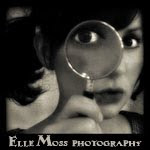People have been asking me what 'lomography' is and how I achieve the effect on my more recent work. So, for them everyone else who's interested, here's the lowdown:
A potted history:The name was inspired by a Russian company;
LOMO Plc in St Petersberg, although 'Lomography' is actually the commercial trademark of
Lomographische AG, an Austrian company.
LOMO Plc produced the now-legendary 35mm
LOMO LC-A Kompakt Automat camera in the 1980s, which was rediscovered in 1991 by
Lomographische. They bought the sole marketing and distribution rights and became the sole distributers for the LOMO LC-A outside of the then Soviet Union.

So what's so cool about a cheap, plastic camera, then?Well, it's partly explained by what first attracted the Austrian Lomography founders to it. Apparently they were very taken with it's; "unique, colourful, and sometimes blurry" images. Lomo photographs are characterised by vignetting (the dark shadows around the edges of the image) and deep, over-saturated colours, which even make a wonderful difference to black and white photography. Because of its cheap, plastic build the original cameras were/are prone to light leaks which can also add an interesting depth to the images.
The cameras are compact, light and easy to use anywhere, anytime.

So how do you do your photos, then, Emma?I use a digital SLR camera and add the lomography effect afterwards in post-processing. This way I can offer buyers the best of both worlds: an original image and/or one with the lomo effect. (I like to think of the second option as adding a little extra nostalgia!)
I personally adore the lomo effect - it gives a shot that classic, retro vintage-feel which is so popular these days and also adds a depth to my work which I really enjoy. I love the slight unpredictability of it, too. It's made photography fun for me again!

Take care - bye for now!
Em ♥





















